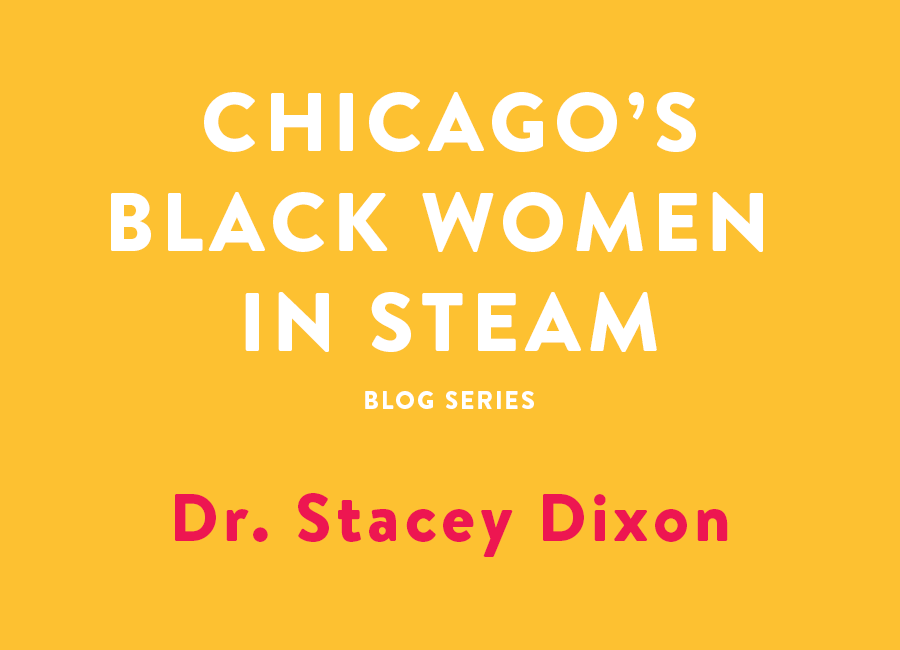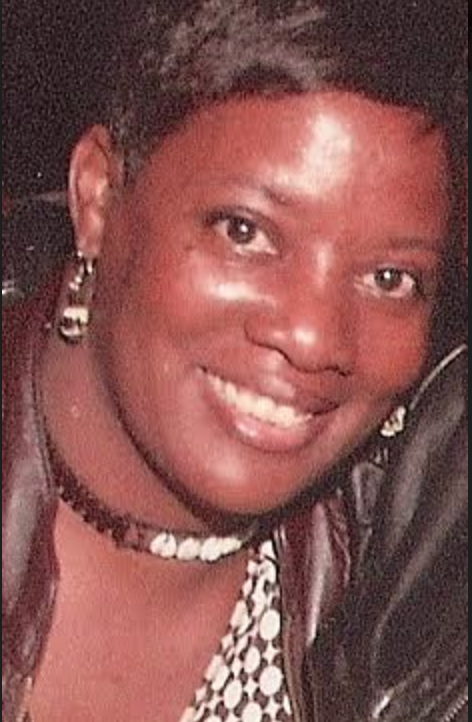Chicago’s Black Women in STEAM Series: Meet Stacey

“Chicago’s Black Women in STEAM” is a new series on The Adler ’Scope that highlights the awesome women of Chicago who are doing amazing things in science, technology, engineering, art, and math fields here in our own community. Meet women of varying ages, backgrounds, and interests and learn their unique stories.
Dr. Stacey Dixon
Director, Student Veteran Support Services
National Louis University

What first sparked your interest in Meteorology and Oceanography (METOC)?
I have always been interested in science. All through school, I excelled in both science and math. However, those courses were not stressed as STEM or STEAM during that time (early eighties). We were more driven towards the world of business with programs like Junior Achievement and others similar. Though I participated in them at the urging of my parents and teachers, it was not my passion. When I joined the military, the only fields available to women were in administration or the supply field. I spent my first enlistment doing something that did not excite me, and decided to leave the Marine Corps after six years. I was then offered the opportunity to transfer into the field of Meteorology and Oceanography because someone noticed that I had received high scores on the ASVAB (a test used by the military to measure an applicant’s suitability for enlistment), mainly in the fields of science, electronics, and math. The field was very small, competitive, challenging, and intensive—and I loved it. Except there were very few females (and none of color) in the field at the time, which made it difficult at times.
You were the first female Meteorology and Oceanography (METOC) Officer in the U.S. Marine Corps (SO amazing). Could you tell us a bit more about what it was like taking on such a groundbreaking role?
In the military, especially the Marine Corps, women are almost always outnumbered. In METOC, the number of women in the field was even smaller. Our customer base was mostly infantry, artillery, and aviation: all male-dominated fields. Working with mostly male officers, not of color in these fields, they rarely took my work and/or briefings seriously. I was often challenged on my forecasts and intelligence briefings or they would ask the male officer or even another enlisted male to confirm my data and analysis.
For me to become an equal and gain the credibility I deserved, I needed to become an officer like them. In 1990, I submitted my first package for the Warrant Officer Program, a program that promotes you from enlisted to officer. A special kind of officer: one with years of technical experience and leadership in their field. In February 2000, I was promoted to Warrant Officer; after ten years, ten applications, and a lot of pushback. It was groundbreaking, though few acknowledged it. The challenges continued to come, but I now had leverage—and I used it. Eventually, the respect for the work I did was acknowledged by others. But I first had to acknowledge for myself how this precedence would change the outlook for the young women coming up in the field after me.
As a former high school teacher, what were some of the ways you encouraged students to develop an interest in STEAM?
I had the privilege of starting my teaching career with the JROTC program. Since the program had a broad curriculum, I had the flexibility to expose the students to other studies like meteorology, and stress to them that they would really use the math they were always complaining about. I achieved this by having them apply some of their education to everyday life. Whether they were in the kitchen cooking or trying to figure out the interest on their accounts, I tried in my simplest way to explain that our world works in binary code in one form or another through mathematical problems, everyday technology, and language. I encouraged them to always think about ‘why’ and ‘how’ things work, because sometimes it is as simple as the equation on the board, or the science question on the test.
Currently, you serve as the Director for Student Veterans Support Services at National Louis University. Does your STEAM background inform how you approach your work?
Two skills that were enhanced through my STEAM background and experiences, were my analytical and critical thinking skills. As a Meteorologist, we didn’t only have to forecast the weather and tides, we also had to determine how it would impact operations and the mission for both ground and air operations. We did it with little technology at the time.
We mostly used real-time satellite photos, radiosondes, and terminal arial forecast to graph charts by hand. We also had to facilitate support for multiple departments simultaneously, and would frequently bear the burden and stress of determining if a mission was ‘a go’ or ‘no go’.
Likewise, as a Director, I have to partner with several internal and external partners in order to achieve the goals we want to use for developing the program. My analytical skills have played a significant role so far in my short success as a Director in determining what will work and may not work for the students I serve. I have to ensure my decisions for the program can and will support assisting each student individually to achieve their academic goals in their transition from the military to the civilian community.
Why are STEAM skills important even for people who don’t intend to become scientists?
All areas of STEAM provide analytical and critical thinking skills, two skills that are necessary to become successful in whatever industry one aspires to pursue. Despite our world of technology, the ability to ‘think out of the box’ is more important than ever. The expected is no longer good enough, we are forever looking for that new life-changing discovery. The next great invention, new technologies, advances in engineering, creativity in art, and revolutionary mathematics. All of which can or will impact what we do everyday and everywhere across spectrum. So, the more you know…
In the United States (and beyond) few women are earning degrees in STEM, and the percentage is even smaller for women of color. How have you made sense of this inequality? How have you overcome it?
I don’t know many people who would endure ten years of rejection in order to achieve a small but important goal. I was brought into the field because of the scores I achieved on their tests. But for ten years, I was told that I was not good enough to be an officer in that same field. Not because I couldn’t, but because I was a female and of color. Similarly, science and math were not stressed upon us as girls and especially not girls of color. So when we struggled, we were often reassured that it was okay because girls just aren’t good at math and science. Sadly, that message continues to circulate. I’ve made sense of the fact that I was a victim of that pedagogy from decades ago. I was a product of that mentality. Even though I crossed some of the hurdles of inequality, I didn’t celebrate them. I was promoted to Warrant Officer, on 2 February 2000, in Black History month. There was no story told across the Base or the Marine Corps that acknowledged that moment in Black History. To me, and for many young girls and women of color, it was as it has always been, “not for girls.”
Though I continue to struggle with being a woman of color in fields dominated by men, I have learned that we are our best advocates. Every chance I get to tell the story of my journey, I tell it. I tell it for women who have been through much of the same, and for those who need to hear it, so that they can have the courage to push through, despite the stereotypes and the inequality.
What advice would you give to young girls of color who are interested in pursuing careers in STEAM?
My advice is simple and somewhat of a cliche… just do it! If it is the stars, the sky, the numbers, the art that excites and ignites your passion, do not let anyone or anything deter you from it. Then, after you are successful in your area of STEAM, let the world know about it. This is how we can combat the stereotype and motivate future generations of women of color to pursue and excel in these areas. Women of color are NOT newcomers to the world of STEM or STEAM. They have contributed significantly to these career fields for decades. It has only just been brought to the forefront recently with movies and documentaries that are finally giving recognition to these groundbreakers. I would advise young girls of color to look back at our history, and witness all of the great achievements from women who were young girls of color, just like you… with a passion in an area of STEAM. They broke the glass ceiling long ago… think about what you can do with those pieces of glass today.






